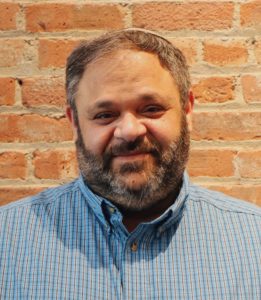
The “new normal” for those who operate skilled nursing facilities is not so new anymore.
Staffing and labor shortages that at one time would have been labeled as unthinkable are now the everyday operating reality. For over two years now, the forces and fallout from the pandemic have shaken up what was already a vulnerable industry, leaving an impact that’s unlikely to change for quite some time without substantial and dynamic shifts in the sector.
Staggering staffing statistics
A June 2022 American Health Care Association (AHCA) survey presented alarming facts that have become all too familiar across the industry: a majority of nursing home providers are facing staffing and labor shortages, and experiencing difficulty hiring.
Most of these facilities rely on overtime, extra shifts and temporary staff in an attempt to relieve the problem.
Hiring permanent staff poses its own unique set of issues. Seventy-one percent of AHCA survey respondents said their top obstacle is the inability to find interested or qualified candidates, in part due to a lack of funding to offer competitive wages to attract new staff.
It’s a circular situation — the labor situation impacts the financial situation, which impacts the most important aspect of the SNF: the ability to provide quality care to the residents they serve.
Working proactively with operators
Historically, many owners/investors do not typically involve themselves or interact with their operators beyond standard financial reviews, legal issues or significant regulatory concerns.
However, in the spirit of what we can call “proactive asset management,” it is critical that those with a financial stake take a much more proactive approach to understanding the “outside-the-box” thinking to drive the operational and financial stability of the building. With the industry facing statistics that are so dire, it is time to throw out all historical paradigms and collaborate in new ways amongst all key stakeholders for the common goal of a facility’s survival.
The key is not for investors to approach operators in a punitive, “checking up,” disciplinary type of approach but rather in a collaborative and idea-sharing style that fosters a team approach to allowing the facility to provide the best possible resident care, which in turn leads to and facility sustainability.
Nontraditional ways to ensure good care and financial growth
Here are some ways beyond traditional census and staffing mitigation to ensure best-in-class care and financial growth of SNFs.
Value-based programs
These include hospitals monetizing current SNF assets, partnering with specialized SNF operators or focusing on increased investment in next-generation SNFs (“super SNFs”) that can accommodate higher acuity patients in a more comfortable and appropriate care environment.
ISNPs/REACH ACOs
Medicare Institutional Special Needs Plans, or ISNPs, enable nursing home operators to increase residents’ access to health and wellness resources, with nurse care managers helping coordinate members’ healthcare at no additional cost to the facility. Meanwhile, REACH ACOs provide partial and full capitation payments to physician groups to spur greater coordinated care.
Preparing for PDPM and RAC audits
It’s important for SNFs to get ahead of PDPM audits, specifically targeting top areas of payment focus. Providers receive reimbursement for physical therapy, occupational therapy, speech-language pathology, non-therapy ancillary (NTA), and nursing. This makes it essential for operators to keep good documentation of areas within those categories (the special care high subcomponent of the nursing category, for example) that could be the target of audits by the government. Preparation is also the solution to defend against RAC audits — having a proactive, real-time compliance structure is the most effective solution to ensuring that all claims filed are accurate.
Market ancillary initiatives
Ancillary services — including therapeutic, care delivery and diagnostic services — are vital parts of care for patients in today’s world and can help ensure the appropriate functioning of the organization, including care delivery and clinical services.
Contract negotiations
Improving contract terms with MCOs and vendors is another area where investors can support operators in overcoming challenges. Because MCOs dictate the types of services a healthcare provider can offer patients, they have a major effect on the day-to-day decision-making processes of healthcare providers.
Investors must be educated regarding such negotiations to help the providers get fair terms for their services. Operators historically have not been viewed as the best negotiators and could use the assistance of business-savvy investors when negotiating.
Develop strategies for improving Five-Star Quality Rating
Improving the Five-Star Quality Rating of a facility can lead to better census, more effective touch points on internet searches and improved reputations in the marketplace. Increased focus on these CMS-driven ratings factors can be hugely valuable.
Like every other industry, as the world around them changes and information becomes more readily available, investors, although never getting involved in actual care, can provide insight, assistance and understanding to operations as they search for non-traditional ways to improve their financials without sacrificing care.
Alex S. Paley, MPH, is Senior Managing Director of Two Bridge. Mr. Paley has 30+ years of executive-level experience managing and overseeing all aspects of companies delivering complex healthcare services, having been responsible for all operational activities, revenue & business development, M&A activity, as well as quality control for multi-tiered national healthcare companies. He has served as the operational liaison to financial institution representatives and investors and has provided oversight, training and education to healthcare operations professionals industry-wide.
The opinions expressed in McKnight’s Long-Term Care News guest submissions are the author’s and are not necessarily those of McKnight’s Long-Term Care News or its editors.




